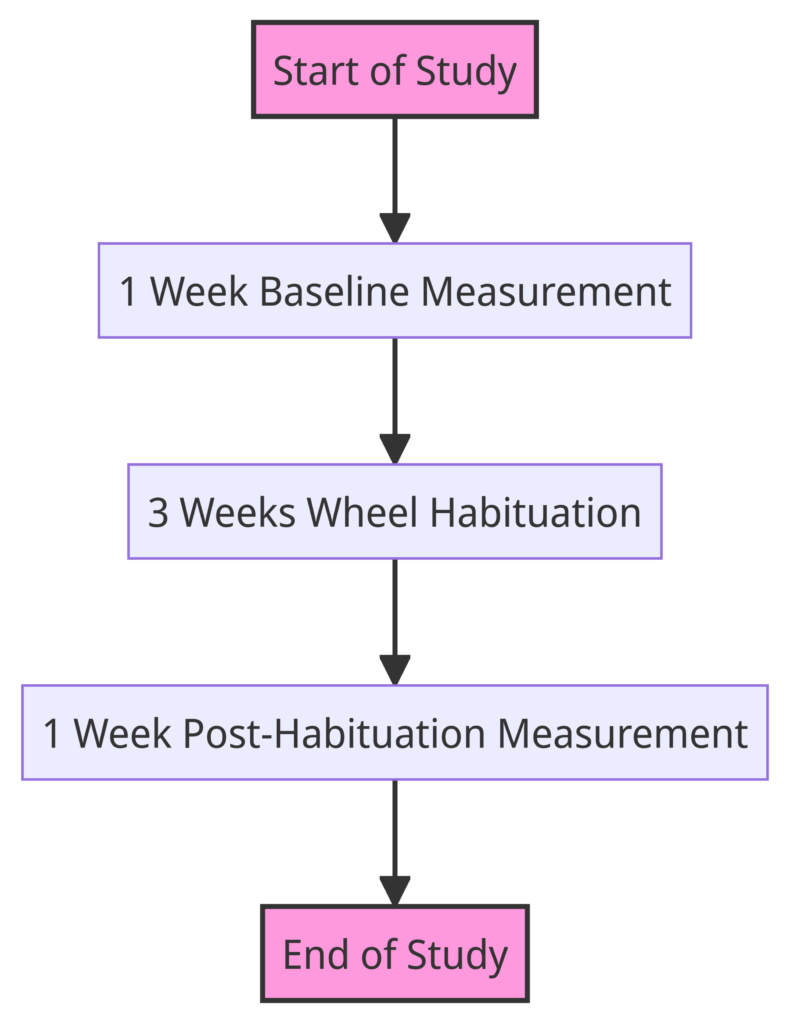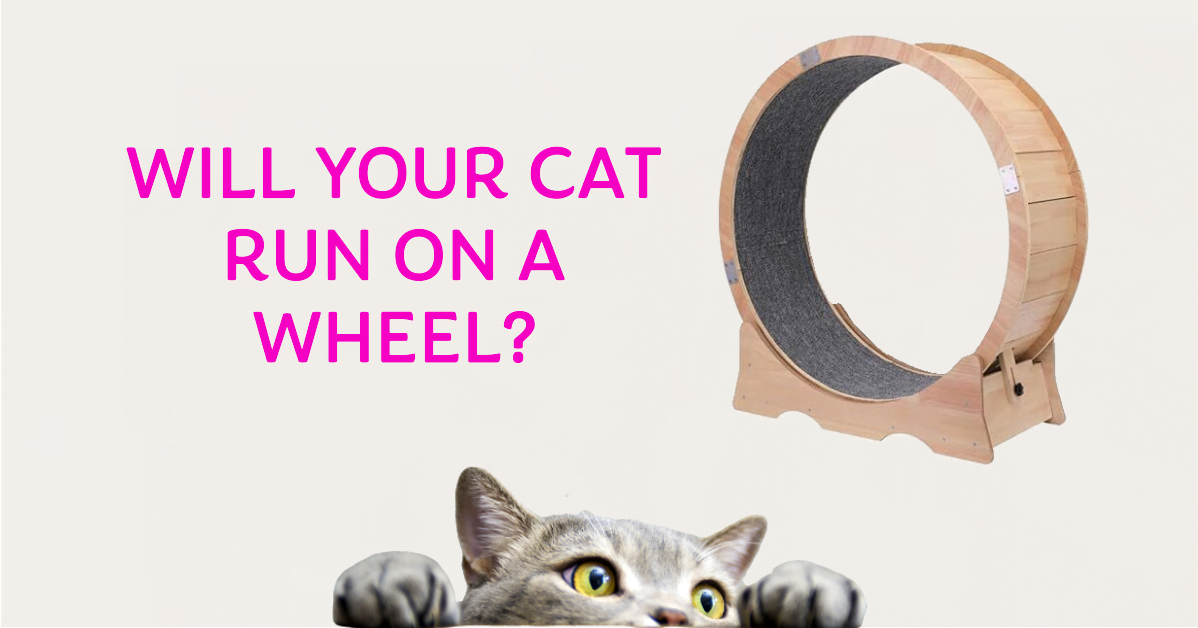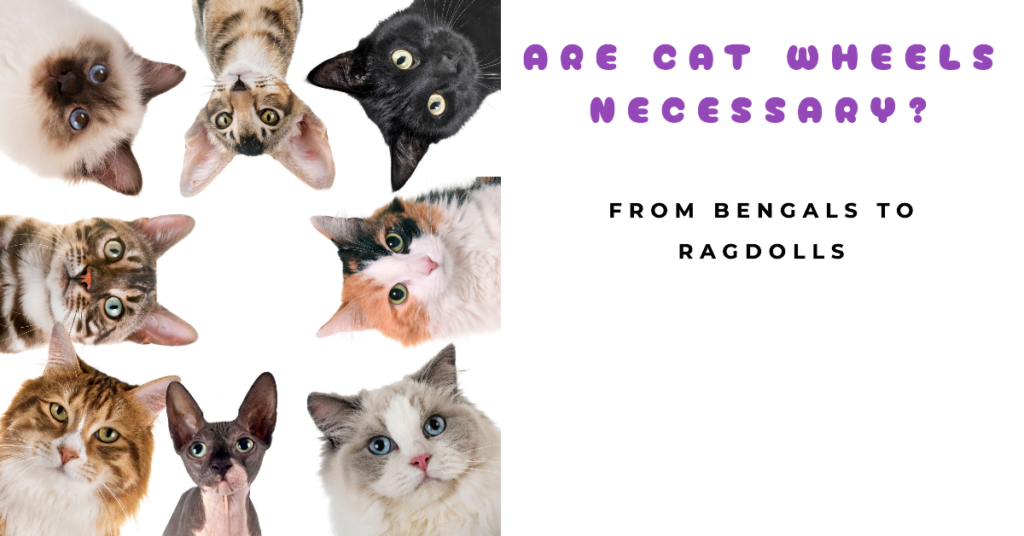Introducing the latest in feline fitness tech: the Running Wheel for Cats! But the burning question on everyone’s mind: will cats actually run on a cat exercise wheel?
Researchers embarked on an experiment to see if our curious kitties would take to a running wheel, much like their rodent counterparts. And the results?
Well, let’s just say some cats might be giving Usain Bolt a run for his money soon. 😺🏃♂️
Cat Exercise Wheel Experiment’s Purpose
The burning question: Will cats actually run on a cat exercise wheel?
Or will it just become another fancy resting spot?
In the name of science (and a bit of fun!), we embarked on a research and found some great data on the National Library of Medicine . The mission?
To see if access to a running wheel could rev up the voluntary physical activity of our adult domestic cats after they’ve had some time to, well, “paws” and get acquainted with it.
Inside the Cat Treadmill Experiment: Unveiling the Details
First things first, for all our compassionate cat lovers out there, let’s address the elephant (or should we say the ‘big cat’) in the room:
No kitties were harmed, stressed, or treated with anything less than the utmost respect and care during this experiment. In fact, it was more like a luxury retreat for our feline friends, with a touch of techy training!
Experiment Timeline Explained

The experiment followed a structured timeline to assess the impact of running wheel access on voluntary physical activity in domestic cats. Here’s how the experiment was divided:
- Baseline Measurement (1 week)
- Initial assessment of cats’ baseline physical activity to establish a control level.
- Wheel Habituation (3 weeks)
- Cats were trained to use the running wheel over a period of three weeks.
- Research personnel interacted with each cat individually for 10 minutes per day, five days a week, encouraging them to use the wheel.
- Toys or laser pointers were used to stimulate interest in the wheel.
- Post-Habituation Measurement (1 week)
- Voluntary physical activity was measured for one week following the habituation period, without any human intervention except during feeding time.
The Feline Participants of Our Experiment
- Eight dashing neutered male cats, averaging 8.6 years old (still in their prime!)
- Eleven sassy intact female cats, with an average age of 3.3 years (young and full of zest!)
Living Quarters: Ensuring Comfort for Our Feline Friends
These kitties were living the dream! Group-housed for 22 hours a day, they had their own individual swanky stainless-steel suites during feeding time.
And talk about room decor – each room was equipped with the finest enrichment furniture, from scratching poles to climbing trees, and an array of toys that would make any cat’s tail twitch with excitement.
Customized Diets: Catering to Our Feline Residents’ Health
No, they weren’t munching on mouse-flavored kibble! These cats enjoyed a scientifically formulated diet, ensuring they maintained their sleek and graceful body weight throughout the study. And, of course, water was available on tap, 24/7.
Technological Insights: Monitoring Feline Activity with Accelerometers
Here’s where it gets electrifying! The cats’ physical activity was measured using accelerometers (think of them as Fitbits for felines). These nifty gadgets provided an objective measure of the cats’ activity levels without any human interference.
Note: If you’re wondering how to get your own tabby started on their exercise wheel journey, don’t miss our complete guide on cat wheel training for some pro-tips and tricks
The Verdict: Will Cats Actually Run on a Cat Exercise Wheel?
Insights into Female Felines’ Nighttime Activity
After the habituation period, our female feline participants surprised us. They became quite active during the night, sprinting on the wheel as if chasing moonlit mice. It was like witnessing midnight marathons! 🌙🐱
The Mellow Males: Insights into Male Participants’ Behavior
Unlike their female counterparts, the male participants didn’t show much change in their activity levels before and after habituation. It seemed like they considered the wheel more of a chill-out spot than a fitness tool. Perhaps they prefer yoga or meditation instead? 🧘♂️😸

Food Anticipation: Male Cats Take the Lead
We analyzed Food Anticipatory Activity (FAA), akin to humans eagerly awaiting their morning coffee. Surprisingly, while females were generally more active, males showed higher FAA, with a significant 17.5% compared to females’ 12%. It seems the boys were quite eager for mealtime!
Conclusion: Wheel or No Wheel?
For our female feline participants, the introduction of the exercise wheel was a hit. It seemed to transform their nighttime activities into lively dance sessions. They embraced the wheel wholeheartedly, especially after dark, displaying their inner night owls by sprinting and twirling with enthusiasm.
Conversely, our male participants took a more relaxed approach. Perhaps they viewed the wheel as a serene meditation spot. However, it’s essential to consider age as a factor. Our male cats were older, and as the adage goes, they may prefer afternoon naps over midnight sprints.
While our older male cats may not have been keen on the wheel, it doesn’t necessarily reflect the preferences of all male cats.
Overall, our experiment yielded positive results for cat exercise wheels. Though individual experiences may vary due to the unpredictable nature of cats, the general sentiment was favorable. While our findings are intriguing, there’s more to explore. Delve into the full benefits of cat exercise wheels in our comprehensive article.
Meet Sean, a fintech whiz with a penchant for pet purrs and blockchain buzz. After a decade of fintech feats, Sean’s tech talents leaped from ledger lines to litter lines, driven by a passion for pets and a vision for a more connected pet care community. With three critter companions as co-pilots, Sean launched this blog to share a treasury of pet-friendly tech tips and tales.



